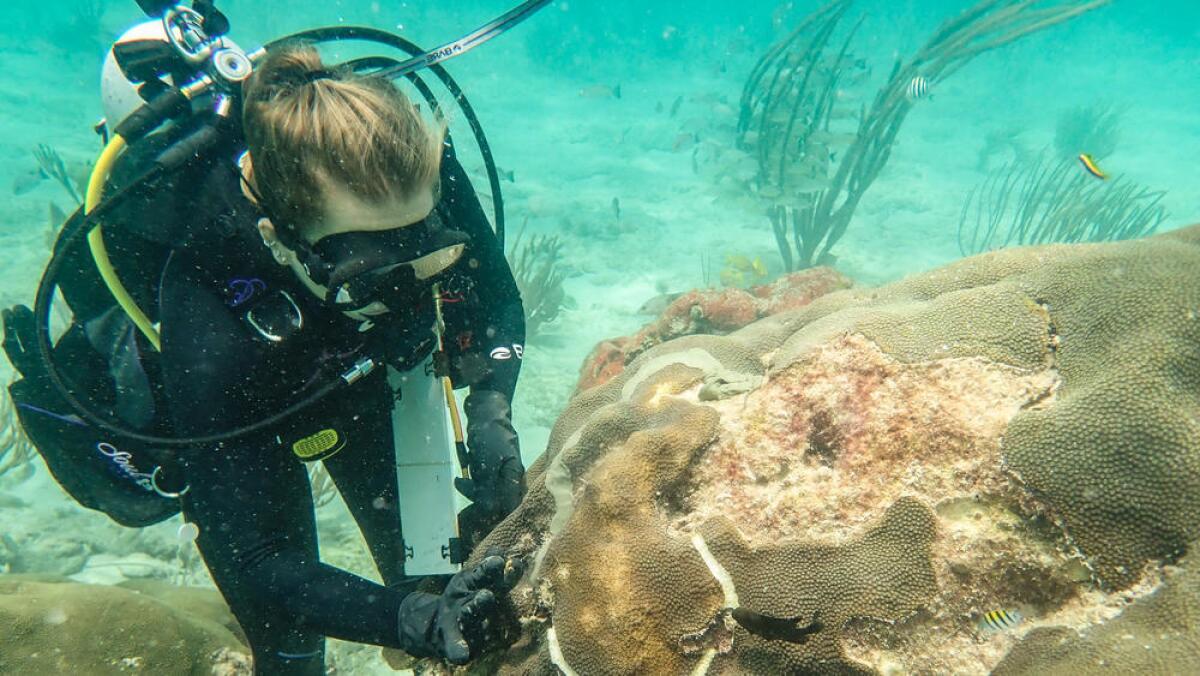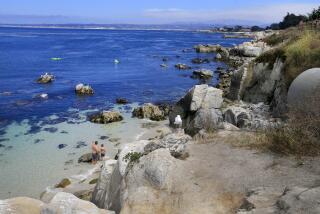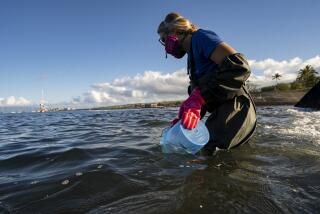Scientists deploy emergency response to save largest corals off Florida

The effort to save South Florida’s largest coral colonies will soon extend beyond the intensive care unit and into the maternity ward.
The colonies are being killed by a disease of unknown origin — sometimes called white plague or white blotch — first identified off Virginia Key in 2014. In the last four years, it has become epidemic and spread to more than half the different species of coral in a reef area now extending from Martin County to the middle of the Florida Keys.
One of the largest corals on the southeastern coast, a Volkswagen Beetle-size star coral about half a mile off Hollywood, took only a few months to succumb to the disease after living for more than 300 years.
A variety of scientists, researchers, institutes and local government agencies have been working with the state to determine the cause of the disease and how to stop it, the latest threat to South Florida’s reef.
Nova Southeastern University, which has been studying how the disease is affecting the largest coral specimens off Broward and Miami-Dade counties, is about to begin a new approach to make sure these species remain.
Researchers from the university have been trying to halt the disease on larger corals by gouging out “firebreaks” a centimeter wide to separate healthy cells from diseased ones, much as firefighters create break lines when battling wildfires. Each firebreak is then filled with an epoxy containing chlorine powder to stop the disease’s progression, and the diseased portion is covered with epoxy too.
In a few weeks, those researchers plan to delve into the coral-baby-making business, hoping to repopulate the coast with coral that will grow into underwater behemoths.
Teams will go out at night off the coast of Fort Lauderdale and cast netting over the large coral, attempting to capture eggs and sperm released by the spawning coral. The eggs and sperm will be mixed together on board to achieve fertilization and then taken back to the lab to grow. Researchers hope in a few years they’ll be able to plant the young coral on top of others that have died, with the new coral eventually covering the skeleton of the old coral and building onto it.
“The hope is, because we’re getting the genetics from those coral, they’ll somehow be more resistant to the conditions that they’re living in now,” researcher Brian Walker said. “Some of these coral don’t show any sign of the disease so far. They’ve been able to fight it off.”
It’s a race against time in the face of the rapidly spreading disease. The coral provide important habitats for sea life. They protect coastal structures from flooding during hurricanes. They support 71,000 jobs and have a $6.3-billion economic impact for the state.
“If we take the time we normally would use, we’ll lose the entire reef,” Broward Mayor Beam Furr said.
Nine of 115 larger coral identified by Nova Southeastern University in 2015 had died by 2018, Walker said. Many others had gone from mostly living to mostly dead as sections fell victim to the disease.
“The prognosis for the future, the projection, doesn’t look good,” Walker said.
A comprehensive survey by the university of the coast from Key Biscayne north through Martin County identified 295 large coral measuring at least 6.5 feet in width. Almost half of those are already dead, many for decades or longer from a variety of causes.
Of the 153 living ones, 41 are more than 95% dead, Walker said.
The 9-by-15-foot coral off Hollywood beach, known to some divers as Monster Fav — based on its being of the species Orbicella faveolata, or mountainous star coral — survived a lot before dying, said Ken Banks, Broward’s manager of marine resources.
The water quality isn’t as good there, Banks said. It’s also close to Port Everglades, with all of its tidal discharges.
“This one persisted up until a couple of years ago, despite the discharges,” Banks said. A core sample taken more than a decade ago from the coral — its years counted like rings on a tree — dated it back to the 1600s. Coral grows about a centimeter a year.
The largest known coral on Florida’s east coast is off Key Biscayne, measuring about 9 by 18 feet. It too has been devastated by the disease and was about 99% dead as of December, Walker said.
Furr remembers snorkeling in the 1960s and said the coral doesn’t look anywhere near as healthy as it did back then.
“What was there at that time was absolutely majestic,” Furr said. “That’s why we really have to find ways to clean the waters up so that they can thrive again.”
Barszewski writes for the South Florida Sun-Sentinel.
More to Read
Start your day right
Sign up for Essential California for news, features and recommendations from the L.A. Times and beyond in your inbox six days a week.
You may occasionally receive promotional content from the Los Angeles Times.






